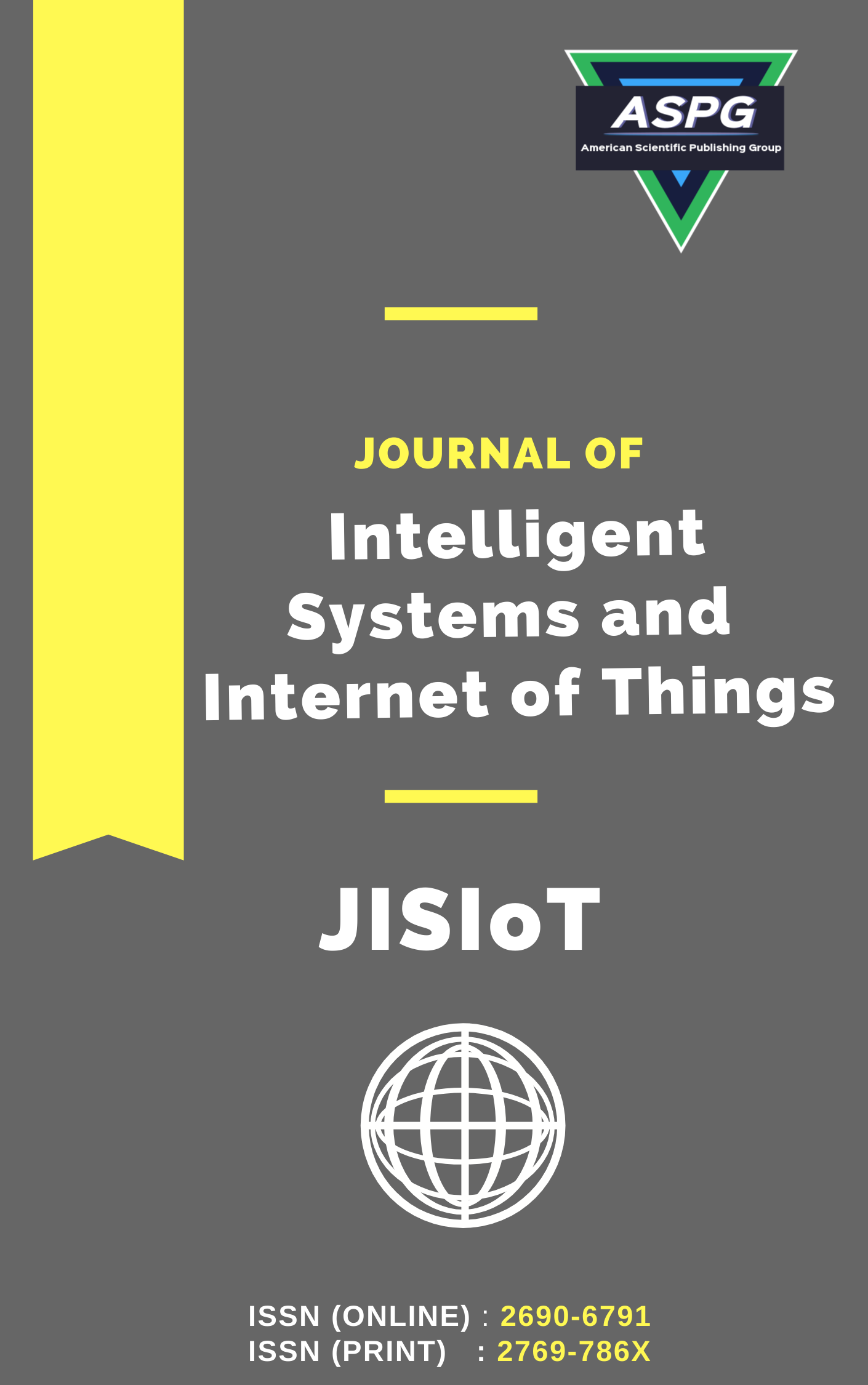

Volume 16 , Issue 2 , PP: 187-201, 2025 | Cite this article as | XML | Html | PDF | Full Length Article
Sukhwinder Bir 1 * , Vijay Dhir 2
Doi: https://doi.org/10.54216/JISIoT.160214
Inventory management is crucial for optimizing consumer demand and supply chains in e-commerce companies. This is the stage at which precise inventory forecasting becomes necessary for forecasting future demand patterns and stock levels. Traditional forecasting methods often struggle with e-commerce data due to seasonality, sudden changes in customer behavior, and nonlinearity. Machine learning (ML) and deep learning (DL) techniques have become powerful weapons for inventory prediction because they can analyze huge amounts of data with high dimensionality. E-commerce firms can improve their resource allocation, inventory management, and customer experience in highly competitive market environments. This paper proposes different types of inventory forecasting models and mainly evaluates the applicability of sophisticated machine learning algorithms. While we commonly use old methods like Random Forest, ARIMA, and MLPs, they often lack the necessary robustness to nonlinearity within inventory data. To address these problems, we introduce a novel method that combines convolutional neural networks (CNN) and XGBoost called CNN-XGBoost, which provides better feature extraction than the conventional prediction model and regression performance. We then compared CNN-XGBoost's performance to traditional forecasting methods (another common approach to contextualizing predictive model performance) using a 52-week simulated dataset in which we mimic patient data growing over time. We used key performance metrics such as R2, mean squared error (MSE), and mean absolute percentage error (MAPE) to assess each model's accuracy. The CNN-XGBoost model performed much better than others, with an R2 of 0.78, which means our proposed model can explain more variation compared to other competitors, as depicted in the results section. It also had the best MSE of 0.15, indicating better predictive performance. The CNN-XGBoost model demonstrated promising prospects as a robust inventory forecasting tool for commerce despite its slightly higher MAPE value (0.69), suggesting some vulnerability to outlier data points. This study demonstrates the potential of using a convolutional neural network in combination with gradient boosting techniques to tackle the complexity of stock management issues and the fact that it outperforms based line methods by a large margin.
Covid-19 , Prediction , Deep Learning
[1] T. Sinha et al., “Prediction and evaluation of COVID-19 confirmed cases using the DL model,” International Journal of Machine Learning and Data Science, vol. 12, no. 4, pp. 234–245, 2022, doi: 10.1016/j.ijmlads.2022.04.001.
[2] A. Narin, C. Kaya, and Z. Pamuk, “Automatic detection of coronavirus disease (COVID-19) using X-ray images and deep convolutional neural networks,” Pattern Recognition Letters, vol. 31, no. 3, pp. 229–234, 2021, doi: 10.1016/j.patrec.2021.02.013.
[3] Z. Huang et al., “DeepCoVDR: A deep learning model for COVID-19 drug response prediction,” IEEE/ACM Transactions on Computational Biology and Bioinformatics, vol. 20, no. 5, pp. 1991–2003, 2023, doi: 10.1109/TCBB.2023.1001297.
[4] S. Ahuja et al., “A novel framework using CNN and stacked Bi-GRU for predicting COVID-19 incidence in India,” Applied Soft Computing, vol. 111, p. 107698, 2022, doi: 10.1016/j.asoc.2021.107698.
[5] S. Ketu and M. Mishra, “Hybrid CNN-LSTM model for COVID-19 prediction,” IEEE Access, vol. 10, pp. 26802–26811, 2022, doi: 10.1109/ACCESS.2022.3151381.
[6] S. Wang et al., “T-SIRGAN: A DL model for predicting COVID-19 spread using epidemiological theory,” Journal of Medical Virology, vol. 94, no. 5, pp. 2302–2310, 2022, doi: 10.1002/jmv.27675.
[7] K. Biswas and S. Dash, “Real-time COVID-19 data analysis and prediction using LSTM-CNN,” Journal of Biomedical Informatics, vol. 122, p. 103921, 2022, doi: 10.1016/j.jbi.2021.103921.
[8] A. Narin et al., “Five pre-trained CNN models for classification of COVID-19 using chest X-ray images,” Journal of X-Ray Science and Technology, vol. 29, no. 2, pp. 313–323, 2021, doi: 10.3233/XST-210748.
[9] H. Abbasimehr and R. Paki, “A multi-head attention-based approach for COVID-19 time series prediction using DL,” Journal of Medical Systems, vol. 45, no. 9, pp. 1–10, 2021, doi: 10.1007/s10916-021-01717-z.
[10] R. L. Kumar et al., “Deep learning-based COVID-19 prediction model using reinforcement learning,” Journal of King Saud University - Computer and Information Sciences, vol. 33, no. 9, pp. 1147–1155, 2021, doi: 10.1016/j.jksuci.2021.05.009.
[11] S. Minaee et al., “Deep-COVID: Predicting COVID-19 from chest X-ray images using deep learning,” Journal of Medical Imaging, vol. 7, no. 6, p. 064502, 2020, doi: 10.1117/1.JMI.7.6.064502.
[12] D. Rajan et al., “Pi-PE: Pulmonary embolism detection using a combined deep learning approach,” IEEE Journal of Biomedical and Health Informatics, vol. 24, no. 8, pp. 2203–2211, 2019, doi: 10.1109/JBHI.2019.2953818.
[13] J. Yang et al., “Pulmonary embolism detection from 3D CT images using 3D CNN and 2D CNN,” Medical Image Analysis, vol. 60, p. 101623, 2019, doi: 10.1016/j.media.2019.101623.
[14] C. Cano-Espinosa et al., “UA2D: A two-dimensional approach for pulmonary embolism detection in CT images,” Medical Physics, vol. 47, no. 6, pp. 2571–2582, 2020, doi: 10.1002/mp.14147.
[15] N. Tajbakhsh et al., “VOIR: A visual object inspection and retrieval system for pulmonary embolism detection,” IEEE Transactions on Medical Imaging, vol. 38, no. 8, pp. 1836–1848, 2019, doi: 10.1109/TMI.2019.2903153.
[16] Y. Li et al., “Generalization and optimization of deep learning models with large margin regularization,” Neural Networks, vol. 113, pp. 28–39, 2019, doi: 10.1016/j.neunet.2019.01.017.
[17] A. P. Dempster, N. M. Laird, and D. B. Rubin, “Maximum likelihood from incomplete data via the EM algorithm,” Journal of the Royal Statistical Society: Series B (Methodological), vol. 39, no. 1, pp. 1–22, 1977.
[18] M. Masoudi et al., “FUMPE dataset: A collection of pulmonary embolism cases with annotated CTPA images,” Medical Physics, vol. 45, no. 3, pp. 1109–1121, 2018, doi: 10.1002/mp.12767.
[19] O. Smidsrod and G. Skjak-Braek, “Alginate as immobilization matrix for cells,” Trends in Biotechnology, vol. 8, no. 3, pp. 71–78, 1990, doi: 10.1016/0167-7799(90)90139-O.
[20] Q. Liu et al., “Efficient generation of gel beads using low-concentration alginate and CaCl₂,” Journal of Materials Science: Materials in Medicine, vol. 32, no. 4, p. 53, 2021, doi: 10.1007/s10856-021-06514-3.
[21] A. Samat et al., “Size and shape effects in alginate gel bead formation,” Journal of Chemical Technology & Biotechnology, vol. 95, no. 7, pp. 1921–1930, 2020, doi: 10.1002/jctb.6356.